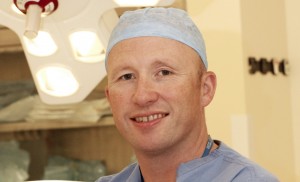Specialised Services
Cartiva Implant for Osteoarthritis
Osteoarthritis of the great toe joint otherwise known as Hallux Rigidus is a common condition. Quite often, some painful movement in the joint remains and because most of the cartilage is worn away the only option is fusion of the joint.
The Cartiva implant offers an alternative to fusion and is essentially a joint spacer that resurfaces the joint. The advantage of this is that more normal range of motion and function remains.
For more information and to view an animated clip of the procedure, follow the links below.
Links
http://www.cartiva.net/cartiva-sci/
https://www.youtube.com/watch?v=iUnOH1cf5BA
Sub-talar implant for flat foot
The subtalar implant is a minimally invasive procedure used to correct flat feet. The operation takes only 15 minutes and is easily carried out under local anaesthetic as a sole procedure. Subtalar arthroereisis is intended to assist in treating the hyperpronated foot by stabilizing the subtalar joint. It is intended to block forward, downward, and medial displacement of the talus, thereby limiting excessive eversion of the hindfoot. The subtalar implant is also designed to be used as an adjunct in conjunction with other corrective procedures, including posterior tibial tendon reconstruction, FDL tendon transfers and the medial displacement calcaneal osteotomy.
Links
ESWT: Extracorporeal Shock Wave Therapy
Extracorporeal Shock Wave Therapy (ESWT) is a popular treatment method used to combat common concerns including heel pain, plantar fasciitis, Achilles tendonitis, tennis elbow, shoulder tendonitis, lateral epicondylitis, and more. It is considered a break through treatment that can make common problems like heel pain virtually obsolete. Many people with chronic pain problems are turning to ESWT to find relief from their pain.
What is ESWT?
ESWT is an FDA approved form of treatment. It is a non-surgical approach to pain relief that is used regularly to cure common problems like plantar fasciitis and Achilles tendonitis. The therapy works by targeting shock waves directly to the area that is experiencing pain. This non-invasive procedure typically lasts less than 30 minutes.
Success Rate
Statistically, over 90 percent of patients that receive this therapy experience a reduction in their pain. In patients that suffered from plantar fasciitis and heel pain related problems, the pain reduction was remarkable. Nearly all patients had successful results with only one treatment of ESWT. For this reason, many people are turning to ESWT to treat their injuries.
Low Risk
One of the main benefits of ESWT is the low risk attached to the procedure. The therapy is treated extracorporeally. Patients receive the therapy outside of their body instead of receiving an invasive surgery. This promotes a faster recovery time, and it also minimizes the side effects from the treatment itself.
Recovering From ESWT
Recovery from ESWT is a gradual process, however the pain will not get worse. In the process of ESWT, damaged tissue cells begin to rebuild. Therefore, healing of the injured area will occur over a few days, weeks or months as these new cells develop. In some rare cases individuals will experience soreness or bruising after the treatment.
Why ESWT?
ESWT is a great option for patients that have chronic pain. Individuals that have tried other options with no results and are still experiencing pain will benefit from ESWT. It is important to try this therapy before the pain gets worse. If the injury gets worse or spreads to other areas of the body, ESWT may not be an option.
